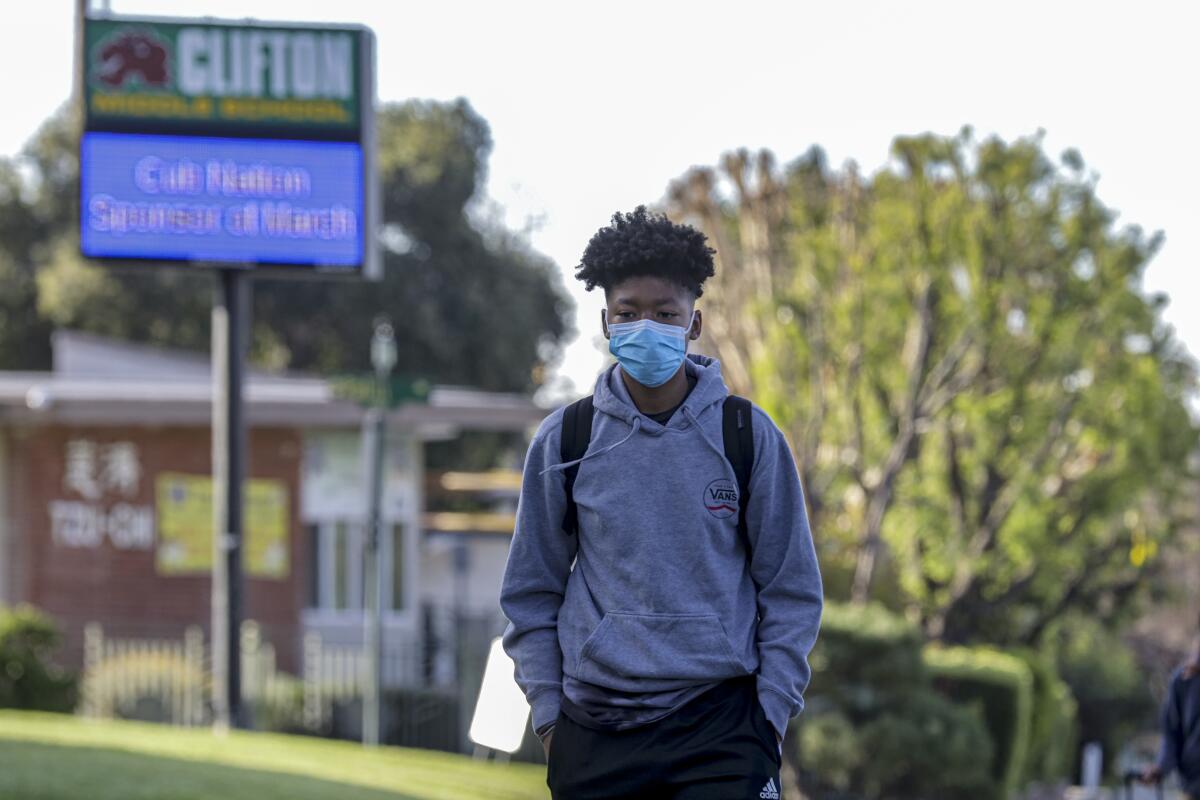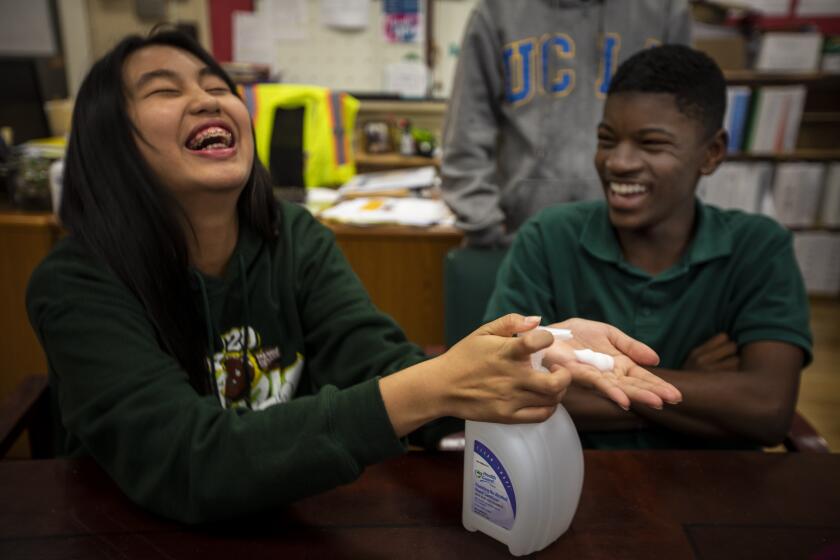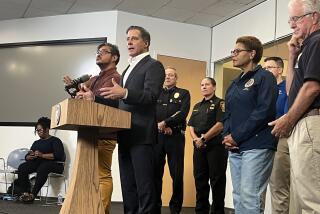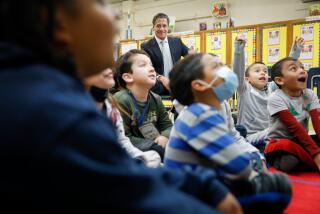Editorial: Closing LAUSD schools in the face of coronavirus sounds like a reasonable decision. Is it?

The Los Angeles Unified school board appears to have made the popular decision by closing all of its schools indefinitely. But there’s no getting away from the enormous disruption this fraught decision will cause to children, families and even for public health.
The board is following the lead of Ohio, Maryland and an increasing number of states and school districts that are shuttering public schools for at least a couple of weeks. On its face, it makes sense: If people are supposed to stay away from groups and maintain social distancing to avoid catching and spreading the novel coronavirus, it seems strange to place children in close proximity for most of their waking hours.
Yet the decision to close schools isn’t as simple as it seems, especially for big urban school districts such as L.A. Unified, the second largest in the nation. About 80% of its 700,000 students live in poverty and rely on subsidized school lunches and other services they receive at school. Their parents are more likely to work in jobs that don’t allow them to telecommute or miss shifts, meaning that they can’t stay home to watch their kids; many won’t be able to afford day care. They certainly can’t afford to go without work for an extended period.
Here’s a parents’ guide to school closures because of the coronavirus. What to do?
To its credit, the district already has planned the distribution of box lunches for students in need, and it will be offering some educational services online, through its TV channel and through an innovative partnership with PBS. The last two are particularly important because a fourth of the district’s students lack access to broadband.
Of course, public health takes priority over difficult family situations. But it’s also unclear whether the coronavirus that causes COVID-19 will spread more slowly with schools closed. By attending school, students were spending much of their time in a place that was being sanitized regularly in the wake of the outbreak. At school, they were continually prompted to wash their hands. They were not gathering in large groups, defined so far as 50 or more. These all helped prevent spread of the disease.
There have been no cases of the novel coronavirus detected so far among L.A. Unified students, staff or their families; the district checked with county health officials at 5 a.m. each day to determine that. The disease generally appears to spare children while threatening the elderly. The real health concern involving schools is less about students falling ill than about how best to prevent them from picking up the virus and spreading it rapidly through the larger community.
Advocates of school closures argue that schoolchildren are much less likely to encounter the coronavirus if they don’t spend their days clustered in groups — the same reason why many of their parents are working from home. But it’s not a given that students or the public will be safer with the schools closed. Some children might need to stay with extended family such as grandparents; elderly people face the highest mortality risk from the virus. And parents might take their children to public places where both are more likely to be exposed.
The district is opening 40 centers to provide childcare in the safest possible environment for parents who cannot find alternatives. Priority should be given to children of healthcare workers and first responders; the region can’t afford to lose their vital skills in the fight against COVID-19.
Of course, there’s a financial aspect to all this was well. The state generally pays districts a certain amount per student who shows up each day. No students, no money. Gov. Gavin Newsom hasn’t told districts how the state would handle all these absences. L.A. Unified has committed to continuing to pay its teachers and other staff. In addition, schools have the annual standardized tests coming up this spring, and test scores would sink if school time is lost.
Here’s where the state should be taking more of a leadership role. Gov. Gavin Newsom issued an executive order Friday calling for schools to continue to be funded if they close during the outbreak, which is a good start. But the order offered no help for schools that remain open. In those districts that continue operating, the state should not penalize schools for low attendance; parents are understandably nervous, and if they feel the need to keep their children out of school, that decision should be respected. The state should also examine ways to subsidize child care and provide increased services to low-income families.
And all states should be demanding a suspension of federally mandated standardized testing of students this year. The last thing families or school officials should be worried about this spring is which way the test scores are heading.
More to Read
Updates
9:03 a.m. March 14, 2020: This editorial was updated with information about a school funding order signed by Gov. Gavin Newsom on Friday, after the initial version of this piece was published.
A cure for the common opinion
Get thought-provoking perspectives with our weekly newsletter.
You may occasionally receive promotional content from the Los Angeles Times.











